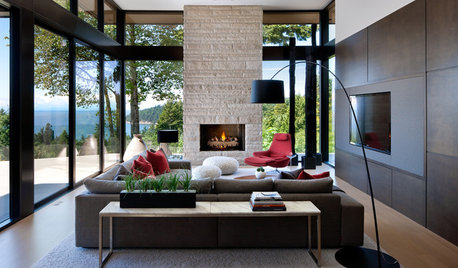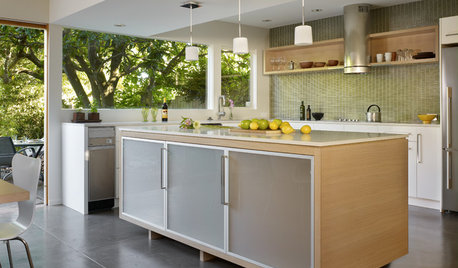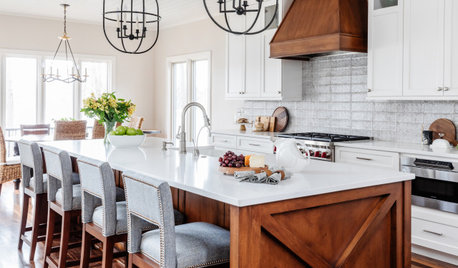New construction HVAC question
walleyemn
3 years ago
Featured Answer
Sort by:Oldest
Comments (31)
D B
3 years agokevin9408
3 years agolast modified: 3 years agoRelated Discussions
New Construction - HVAC Dilemma
Comments (9)broconne - well I can say that I am in a similar situation... Building 4,000 sq feet in Cary. I have the luxury of custom construction and still have to talk to my GC. I will probably do dual fuel on the 1st floor and HP only on the 2nd. Dual fuel being 80% gas and heat pump. Electric strips are never the best choice - absolutely never. You will save money with the setup I am proposing but ROI is hard to figure. There are ways to do it but I don't have the answer. It really should be less than 5 years for a simple switch to HP in this climate - but perhaps greater than 5 years for the gas/hp hybrid setup. But know that most people don't do HP around here because there is the impression that it won't warm the house enough (for a large house). Part of that is because insulation is not the best - since we have a fairly mild climate. Also - HP's are seen as less durable - which in fact they are. I've built semi-custom before and never even thought of asking about changing the HVAC. So - I am not surprised that no one in your development has mentioned it. I wish someone would give ROIs on different options but there are so many variables. Probably best is going greater than code on attic insulation. Next is reducing air infiltration. Next would be high efficiency HPs. Those are my 3 choices. My windows are already pretty good and I am going to price out foam - primarily for the attic....See MoreNew Construction - HVAC Dilemma
Comments (7)I would find out who the subcontractor is, go to their office and talk with the owner/sales staff about options. If you are building a house that size and installing a builder grade system, I think you will be unhappy. When you build a large home that probably have nice finishing touches in it, people geherally forget the most important item-- the heating/cooling system. They tend to spend the least amount of thought on it and it is the one thing they utilize every day. The contractor will also give you options and pricing. Your electricity/gas prices look ideal for a dual fuel heat pump. I don't know if your quoted electricity/gas rates include taxes, delivery charges, etc. However, it still looks pretty good. I would suggest a couple of things for your building envelope. Make sure you windows are at least lowE2, preferably with argon gas. You have a lot of them and heat loss/heat gain is a major consideration. Not all windows are created equal. Secondly, I would go no less than R-38 in the top floor ceiling and preferably to R-50. Your upstairs will normally get 4-5 degrees warmer than downstairs. You might also look into radiant barrier for the upstairs on the deck sheeting during the install. That will cut down your heat gain in the summer and make a noticeable difference in your home's comfort. AT least R-19 in all exterior walls and R-30 under the main floor crawl space. You los a lot of heat through the floor during the heating season-- more than folk realize. YOu'll need to have these final numbers -- whatever they are-- for the HVAC person to do a proper load calc so he can size the heating and duct system properly. Don't let the contractor snow you. You have rights as you are the homeowner. I am assuming this is a custom home and not a tract plan. If you are pying the bill, you have rights. If it is a custom and there has been an allowance set for the heating system, you will likely need to pay additional money to get a better than builder grade system. My builder was supposed to install energy star rated heating equipment in mine and somehow it got changed. it was inadvertent but I got it changed back. Cost me a little to upgrade my HP to what I wanted but it has paid off, I just wish I had known a little more about heating systems and options before we went into the process. I've since upgraded my insulation to R-57 in the attic and installed radiant barrier. This spring/summer I will upgrade the crawl space insulation to R-43 by adding styrene rigid board to seal my R-30 insulation. I will have a nice tight envelope. You are in the best position to get what you want. It's always easier to do it right the first time than to go back and fix something. And... not all HVAC contractors are equal. Check on the HVAC company reputation with the better business bureau, etc. Remember, cheapest may be better for the contractor, but may not be better for you. Then again, you may find someone with better pricing who will also do it the right way. My three cents worth (inflation)....See Morecarrier hvac or trane hvac
Comments (5)Jt Some questions please. What is your location? What size home living area? What size furnace and eff are you replacing? What size AC are you replacing? I would like to know the exact mdl number evap coil for each quote. What thermostat is proposed for the Carrier quote? That is a big difference between the 96% eff Carrier furnace and the 80% eff Trane furnace-both 60 K input. That would be about 56 KBTUs output on the Carrier and about 48 KBTUs on the Trane. Not insignificant. I don't care for some shortcuts that homeowners make particularly on reusing linesets and using existing thermostats that shortchange a nice furnace's operational capability. Post back with the info requested. IMO...See MoreNew Construction HVAC ?
Comments (9)It's not that hard with the software. Basically, you feed it the square footage of each room, the type of insulation in outside walls and size/type of windows. You tell it what temperatures you want for winter and summer and what the averages are for your region. It sits and thinks and spits out numbers, usually in BTUs for heating and cooling. From that you get your tonnage for cooling and BTUs for heating. BTW: I might be asking for a bit more insulation in the attic if this is new construction. R-38 would be a little light for me. I might be looking for R-50 in Penn....See MoreCharles Ross Homes
3 years agowalleyemn
3 years agoDavid Cary
3 years agoAustin Air Companie
3 years agoDavid Cary
3 years agoCharles Ross Homes
3 years agomike_home
3 years agowalleyemn
3 years agoAustin Air Companie
3 years agowalleyemn
3 years agoCharles Ross Homes
3 years agoAustin Air Companie
3 years agoCharles Ross Homes
3 years agolast modified: 3 years agokevin9408
3 years agoAustin Air Companie
3 years agolast modified: 3 years agoCharles Ross Homes
3 years agowalleyemn
3 years agoD B
3 years agoCharles Ross Homes
3 years agokevin9408
3 years agoAustin Air Companie
3 years agojust_janni
3 years agoAustin Air Companie
3 years agoCharles Ross Homes
3 years agoAustin Air Companie
3 years agolast modified: 3 years agoCharles Ross Homes
3 years agolast modified: 3 years agoAustin Air Companie
3 years agolast modified: 3 years agoElmer J Fudd
3 years agolast modified: 3 years ago
Related Stories

REMODELING GUIDESConsidering a Fixer-Upper? 15 Questions to Ask First
Learn about the hidden costs and treasures of older homes to avoid budget surprises and accidentally tossing valuable features
Full Story
DOORS5 Questions to Ask Before Installing a Barn Door
Find out whether that barn door you love is the right solution for your space
Full Story
KITCHEN DESIGN9 Questions to Ask When Planning a Kitchen Pantry
Avoid blunders and get the storage space and layout you need by asking these questions before you begin
Full Story
GREEN DECORATING8 Questions to Help You See Through Green Hype
With the ecofriendly bandwagon picking up some dubious passengers, here's how to tell truly green products and services from the imposters
Full Story
MOVINGHiring a Home Inspector? Ask These 10 Questions
How to make sure the pro who performs your home inspection is properly qualified and insured, so you can protect your big investment
Full Story
WORKING WITH PROS9 Questions to Ask a Home Remodeler Before You Meet
Save time and effort by ruling out deal breakers with your contractor before an in-person session
Full Story
REMODELING GUIDESWhat to Consider Before Starting Construction
Reduce building hassles by learning how to vet general contractors and compare bids
Full Story
BUDGETING YOUR PROJECTConstruction Contracts: What to Know About Estimates vs. Bids
Understanding how contractors bill for services can help you keep costs down and your project on track
Full Story
KITCHEN WORKBOOK4 Steps to Get Ready for Kitchen Construction
Keep your project running smoothly from day one by following these guidelines
Full Story
CONTRACTOR TIPSLearn the Lingo of Construction Project Costs
Estimates, bids, ballparks. Know the options and how they’re calculated to get the most accurate project price possible
Full StorySponsored
Franklin County's Full Service, Turn-Key Construction & Design Company



Elmer J Fudd